

LIFE
FORCE
The magazine of the photo-essay

June 2017 back issue
Afghan Refugees
in Europe

“A free, really high quality photo-essay magazine. Fabulous!”
Stephen Fry. British actor, writer and film & documentary maker
by Iva Zimova
I met an Afghan boy called Alim in November 2015 in the Turkish town of Cesme, only six miles from the Greek island of
Chios. He was living with the hundreds of other migrants from Syria, Afghanistan and Iraq in an unfinished tourist resort
complex, waiting for his turn to take to the Mediterranean Sea. Alim’s journey to a better life in Europe started in his
native Afghanistan and passed through Iran, Turkey, Greece, Macedonia, Serbia, Hungary, Austria and Germany ending
in Holland where he applied for political asylum.
Not all refugees who made it to European states will fulfill their dream. Alim, for example, did not get refugee status. He
now lives in limbo in the town of Groningen with another 80 migrants who were also denied refugee status. They are
only provided with housing and food by the government. There is not much to do except wait. Alim does not know if he
will be sent back to Afghanistan. His dream was to go to school, and study environmental studies. This dream is slowly
dying.
Since the closure of the so-called Balkan route in early 2016, about 75,000 refugees and migrants, including an
estimated 24,600 children, are stranded in Greece, Bulgaria, Hungary and the Western Balkans. There is no official
data on how many Afghans are among the migrants, though Afghans make up a huge number of those staying there.
Two shabby and abandoned factories in the Greek town of Patras can easily be seen from the street. It does not look
like a place where people can live, yet they have become temporary shelters for migrants who use Greece as their
gateway to Europe. Located across the street of newly ferry terminal, migrants can easily track the ship's arrivals.
Each day, some try to jump over a high fence into the terminal in the hope of sneaking onto a ferry set for Italy. Only a
few attempts are successful. Ramadan, a sixteen year old Afghan, broke his hand on his first attempt. Now he must wait
until his hand heals. Another Afghan migrant was beaten with an iron bar by a truck driver. His palm was cut and arm
broken. An elderly Ali from Afghanistan got through the Greek controls unnoticed and made it onto a ferry. It takes 20
hours or more to get to Italy. It’s a ride without food, water or a chance to move. Everybody in the factory was happy for
Ali, but he was back in Patras four days later. Italian border police found him under the truck and sent him back to
Greece. Old Ali would like to reach France where his son lives.
In Belgrade, Serbia, behind the Beograd Centar main train station, thousands of undocumented young men mainly from
Afghanistan and Pakistan (including roughly 300 minors) use abandoned warehouses as temporary shelter. They also
seek a better life in Europe but have been held up in their journey by the closure of Hungarian border.
The living conditions in warehouses are inhuman yet people kept living there. They felt it offers better access to
smugglers and less danger of deportation. People try to cross the borders of Croatia, Hungary, or even Romania,
considering of the best prospect of a successful crossing. Here too, only a few attempts are successful.
Halim (15) from Afghanistan claims that when he was caught by Croatian Police all his money and mobile phone was
taken.
Some inhabitants of the warehouses used to live in refugee camps, but absence for three days means they lose their
space. To get it back takes a long time. An Afghan family of nine (including children) made it as far as the Croatian
capital Zagreb, but were caught and sent back. It took them five days to reach the capital; it took them just 3 hours to be
back in Serbia. They are not sure if they will be allowed back to the refugee camp.

Turkey, Cesme 2015. An undocumented Afghan migrant looks out across the Aegean Sea. Approximately 16 km away
is the Greek island of Chios which he hopes to reach, with his family, travelling in a rubber dinghy.
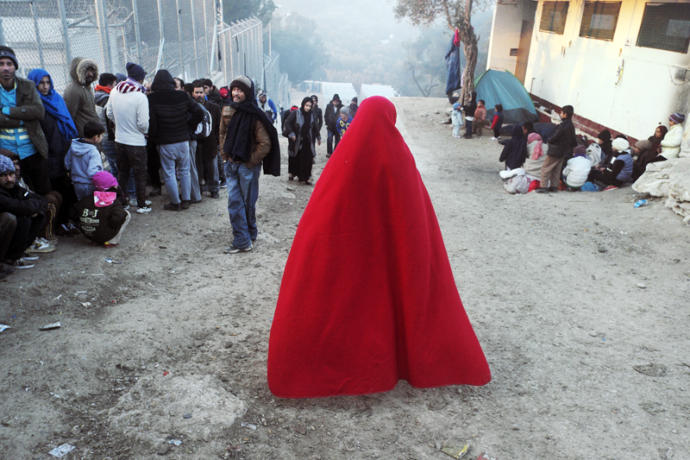
An Afghan refugee, wrapped in a red blanket, walks past the queue for registration in Moria registration camp.
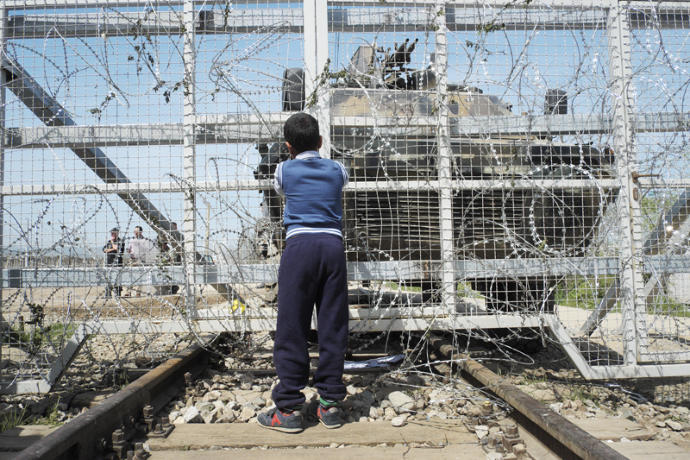
Greece, Idomeni 2016. A refugee boy stands in front of a razor wire fence on the Greek-Macedonian border.
Macedonia fully sealed its border with Greece on March 9, 2016, shutting down the Balkan trail used by more than a
million people. Around 14, 000 people were stranded in makeshift camps in Idomeni, a small village near the
Macedonian border.
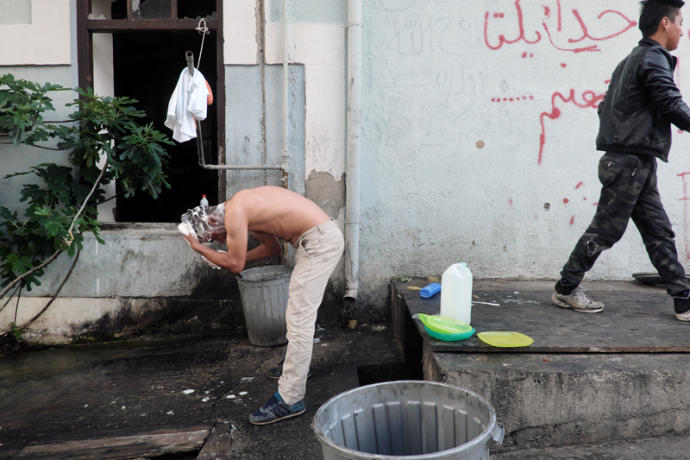
Patras, Greece 2017. An illegal Afghan migrant washes his hair at an abandoned wood factory. Migrants move to
Patras from Athens and Thessaloniki to be closer to the ferry terminal as they think that this is the last open route to
Western Europe.
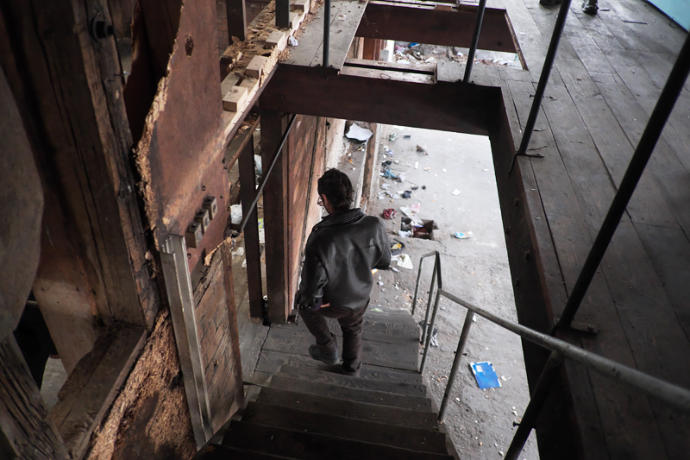
Patras, Greece 2017. A migrant walks down stairs at his shelter in abandoned wood factory.
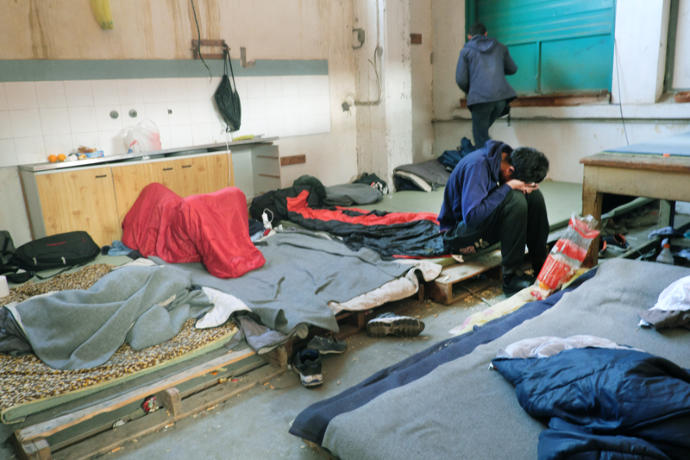
Patras, Greece 2017. About sixty migrants live in squalor in an abandoned textile factory. A few of them stay in this
dilapidated room; the rest put up tents in much a bigger area.
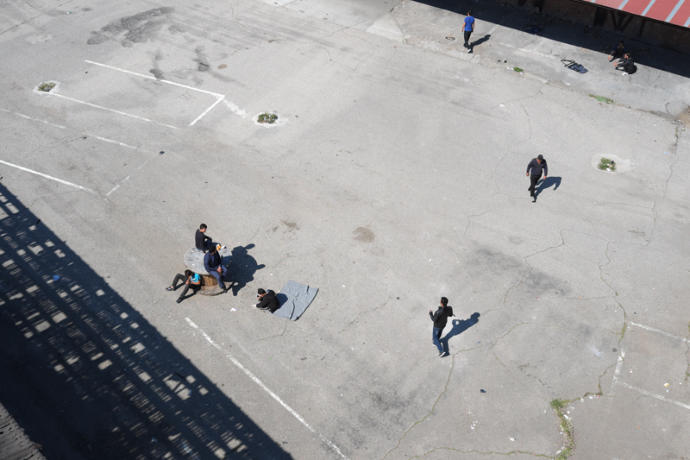
Patras, Greece 2017. There is not much to do on weekends when there are no ships leaving to Italy. To pass the time,
migrants play cards and soccer or browse their smartphones.
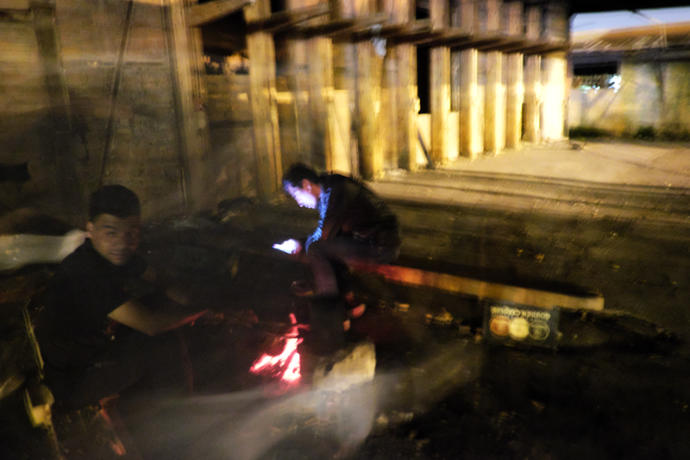
Patras, Greece 2017. Afghan migrants boil water on an open fire at the squalid former wood factory.
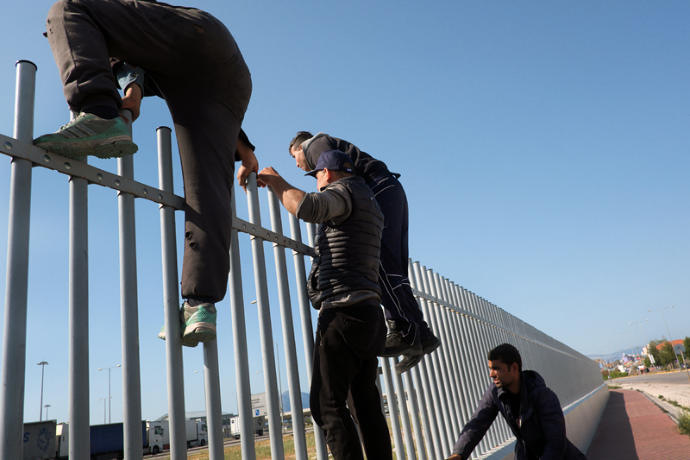
Patras, Greece 2017. Afghan migrants climb a fence into a ferry terminal hoping to make the illegal crossing to Italy.
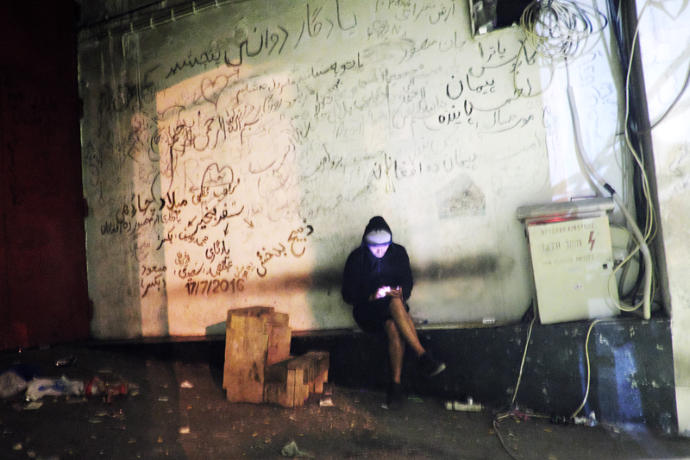
Patras, Greece 2017. An undocumented Afghan migrant charges his smartphone in an abandoned textile factory.
Phones are very important for migrants, not only are they a link to their families back home, but also with people
smugglers.

Belgrade, Serbia 2017. Afghan migrants fly a homemade kite fashioned out of a plastic bag behind the main Belgrade
train station.
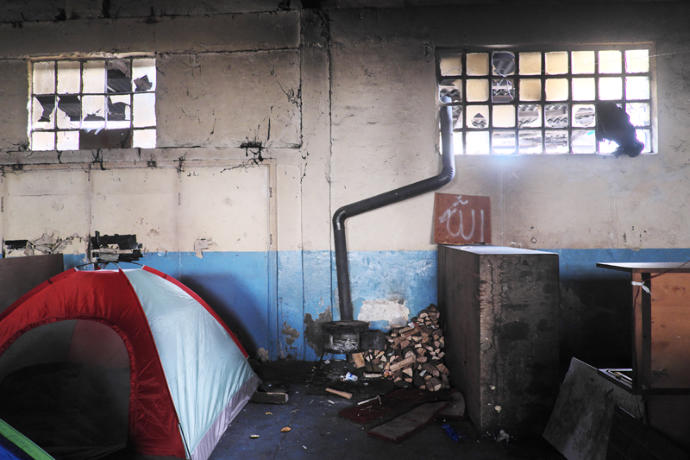
Belgrade, Serbia 2017. A temporary makeshift migrant’s living quarter in one of the abandoned warehouses behind
Belgrade’s main train station.

Belgrade, Serbia 2017. Four undocumented Afghan migrants (from left) sit in front of their temporary dwelling behind
the main Belgrade train station. The boy on the right is from Pakistan. He tried to kill himself, but was saved by the
Afghans and was accepted in their squalid former barrack.
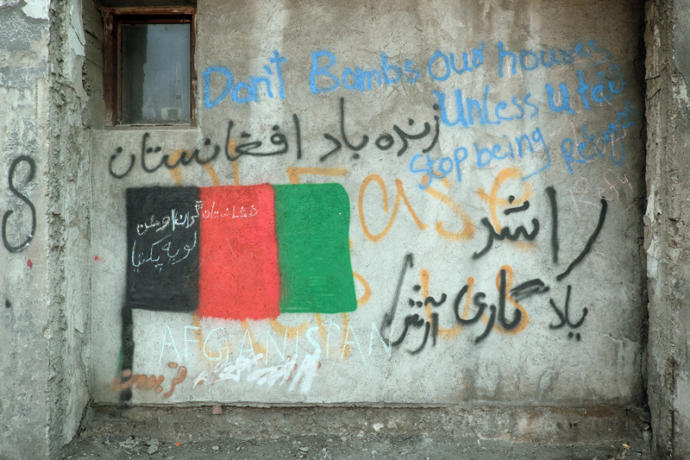
Belgrade, Serbia 2017. An Afghan flag painted by migrants on the wall behind the main Belgrade train station.

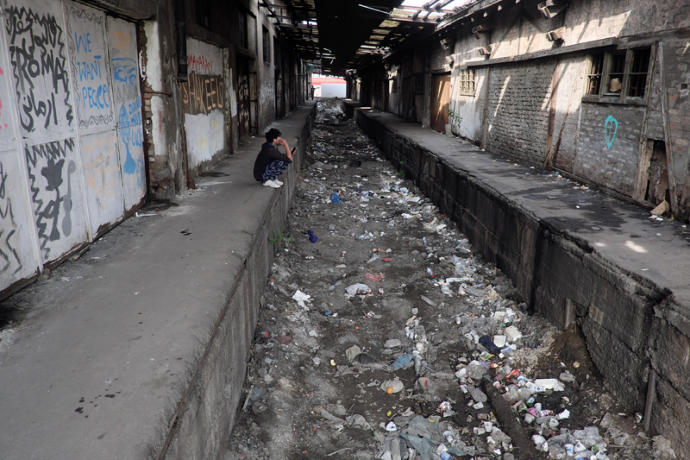
Belgrade, Serbia 2017. An Afghan migrant uses his mobile phone in squalid former warehouses. Migrants will have to
move to refugee camps or face deportation back to Macedonia or Bulgaria, their first destination in Europe.
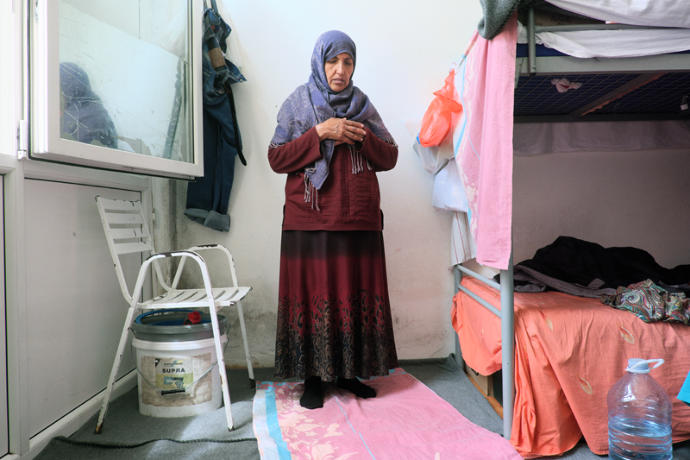
Principovac, Serbia 2017. Zia Gul from Afghanistan prays in her room in a Serbian reception centre in Principovac. She
left her homeland with her son, but they were separated during their journey in Turkey near Cesme, the town just six
miles from the Greek island of Chios. Her son made it to Germany; Zia Gul has not seen him for one year and six
months. She waits to be accepted by Hungary from were she hopes to reach France where her son now lives.
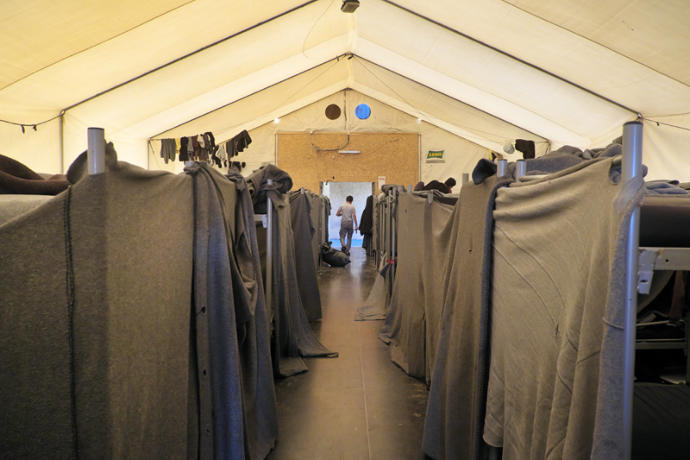
Principovac, Serbia 2017. There are about 300 migrants (mostly from Afghanistan and Pakistan) who are stuck in
Principovac Reception Centre in Serbia. Most of the migrants have no interest in seeking asylum in Serbia. Many
make multiple attempts to sneak over the border into the Schengen EU member states.
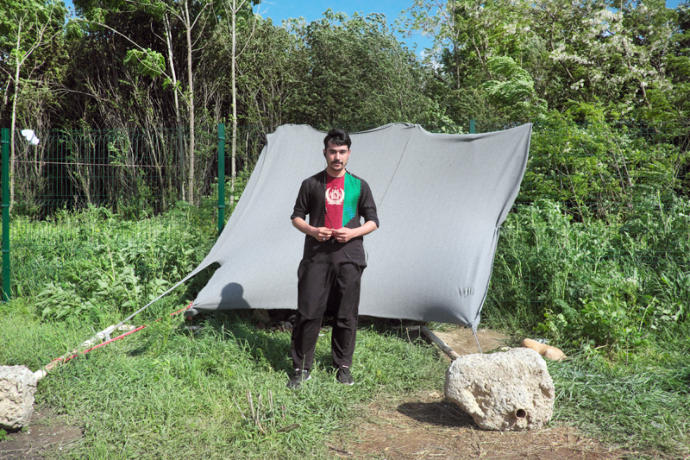
Principovac, Serbia 2017. Afghan refugee Usman Ali dresses in Kamiz Shalwar, the traditional men’s clothes
embroidered with the Afghan flag, in Principovac Reception Center.









